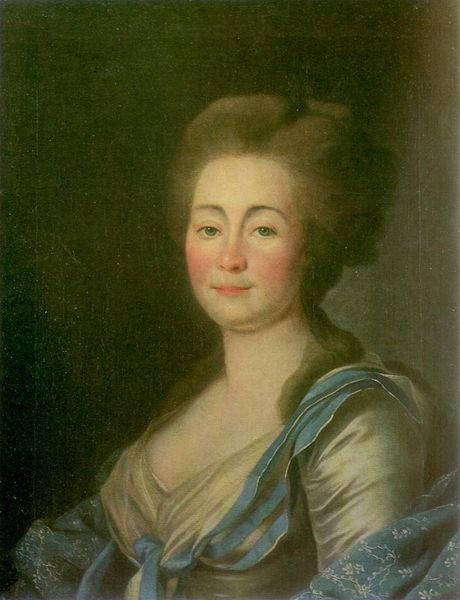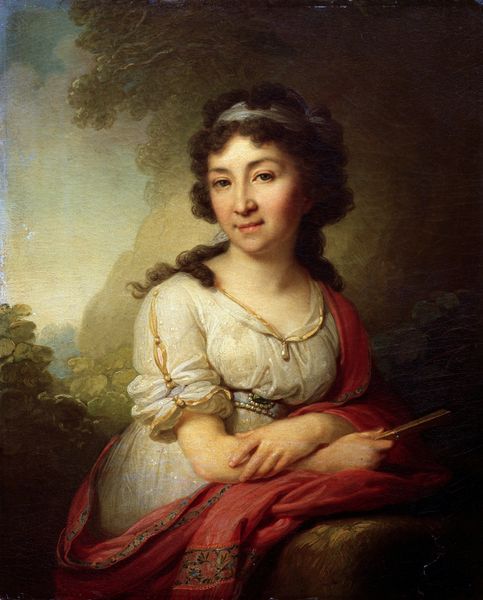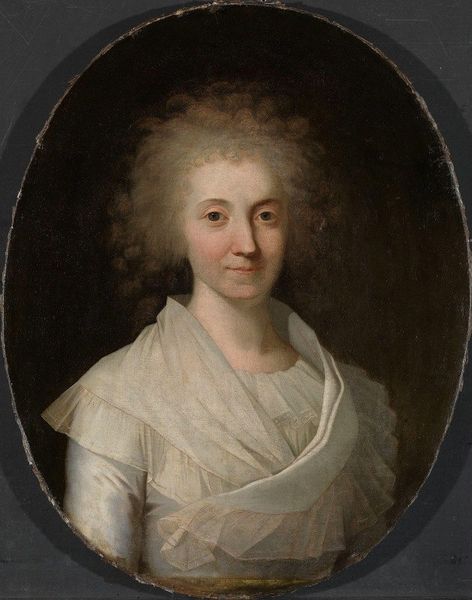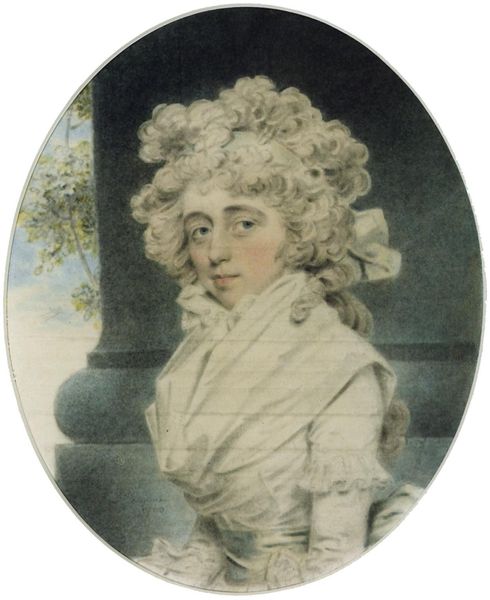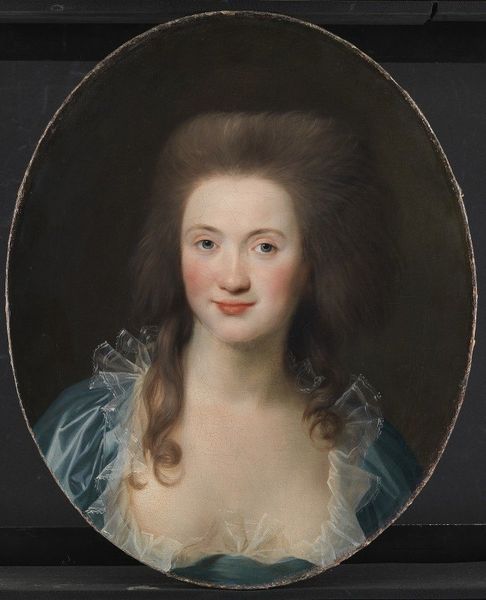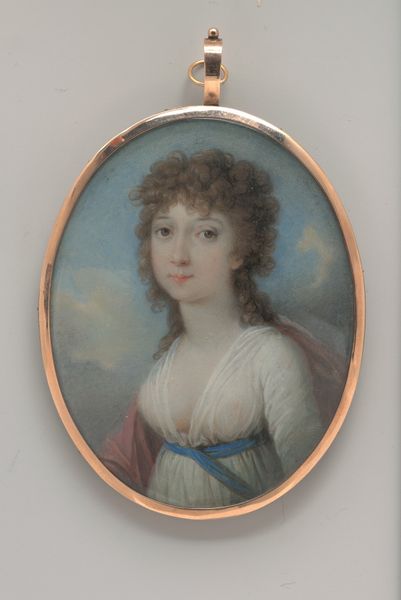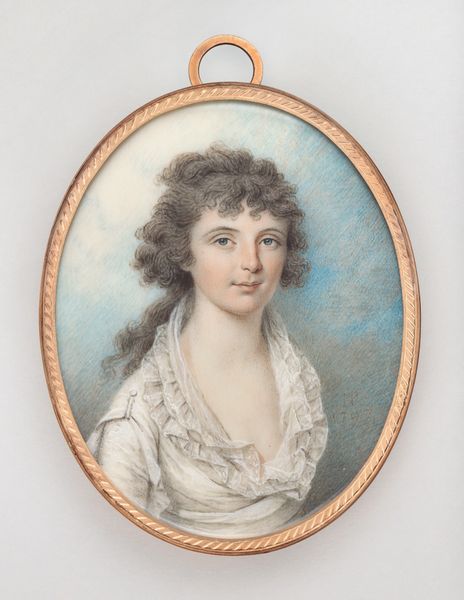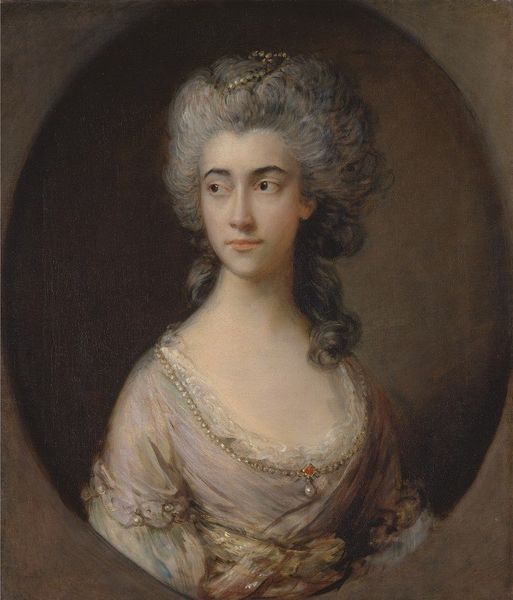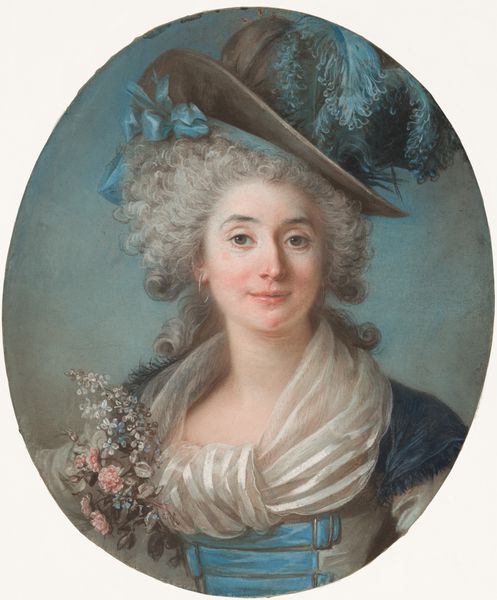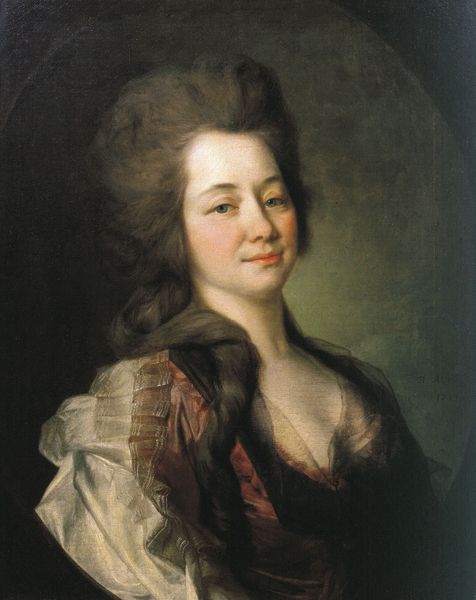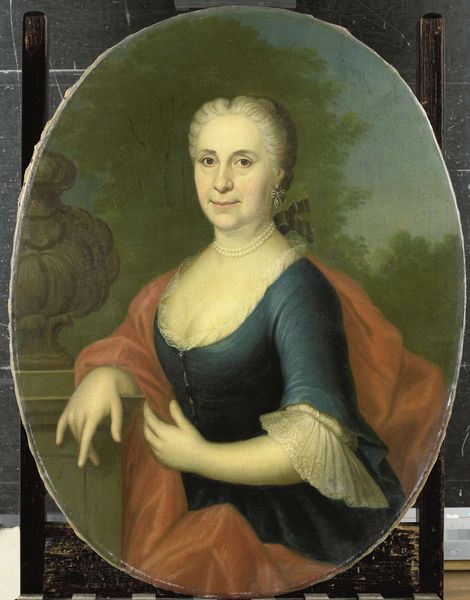
painting, oil-paint
#
portrait
#
painting
#
oil-paint
#
romanticism
#
academic-art
Copyright: Public domain
Curator: Here we see Vladimir Borovikovsky’s portrait of Olenina Elizabeth Markovna, rendered in oil. Editor: What strikes me immediately is its gentle melancholy. The soft focus and oval frame create a sense of intimacy, but her expression holds a certain sadness. Curator: Borovikovsky was a leading portraitist in late 18th and early 19th century Russia. These weren't simply aesthetic representations; they were potent signifiers of social status, intimately linked with the prevailing court culture of the time. Portraiture was a statement of one’s belonging. Editor: Precisely, and the very brushstrokes lend to that interpretation. Observe how delicately the lace of her gown is rendered versus the swirling brushwork defining her hair; each area holds equal compositional importance, indicative of that desired belonging. Curator: Absolutely, and we see his works served as propaganda in a very soft spoken sense, creating visuals for the elite social spheres of Imperial Russia. His influence on artistic developments and popular imagery should be not dismissed. Editor: The artist balances cool whites with earthy, subdued background tones. It almost feels monochromatic, but that adds to the timeless quality—as if removed from a particular trend or style of a time, and even place. Curator: Beyond a beautiful depiction of womanhood, this portrait allows insight to social and gender relations and the development of visual representation of Russian aristocracy at the turn of the century. Editor: An artistic creation of individual taste to the aristocracy with political influences that helped evolve a painter's technique. This helps inform further analysis by connecting personal touch, with an art form for expression, and an elite commission and/or expression of power during its socio political moment.
Comments
No comments
Be the first to comment and join the conversation on the ultimate creative platform.



